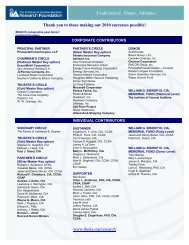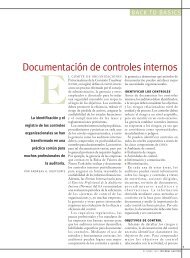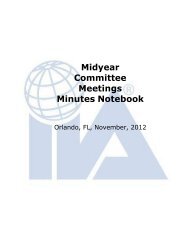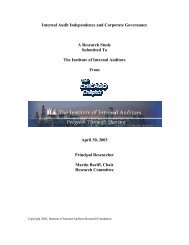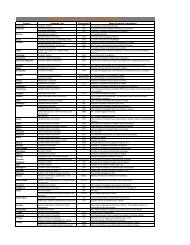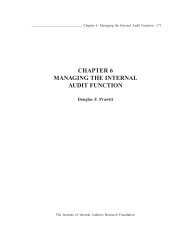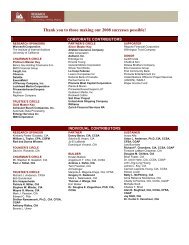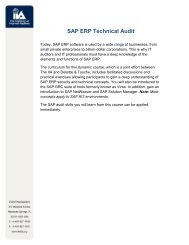Chapter 1.pmd - The Institute of Internal Auditors
Chapter 1.pmd - The Institute of Internal Auditors
Chapter 1.pmd - The Institute of Internal Auditors
You also want an ePaper? Increase the reach of your titles
YUMPU automatically turns print PDFs into web optimized ePapers that Google loves.
14 Research Opportunities in <strong>Internal</strong> Auditing _________________________________<br />
with the forging <strong>of</strong> strategic alliances and the emergence <strong>of</strong> virtual organizations, has<br />
dramatically altered the purpose and functioning <strong>of</strong> organizations as well as the attendant<br />
needs for exercising control. 10 <strong>The</strong> controls landscape within organizations today is quite<br />
different from those existing in the industrial-era traditional organizations for most <strong>of</strong> the<br />
20 th century. In this radically changed business environment, the internal audit function has<br />
become a major support function for management, the audit committee, the board <strong>of</strong> directors,<br />
the external auditors, as well as key stakeholders. Properly conceived and implemented, the<br />
internal audit function can play a critical role in promoting and supporting effective<br />
organizational governance.<br />
As multinational enterprises have recognized an increasing array <strong>of</strong> risks facing the<br />
organization, it is no surprise that the demand for risk management pr<strong>of</strong>essionals has risen<br />
dramatically (cf. Bernstein, 1996). Any disciplined approach to growth and value creation<br />
assumes that the organization is managing all manner <strong>of</strong> significant and likely risks effectively.<br />
Risk can be considered both at the macro or portfolio level (enterprise-wide risk management)<br />
as well as the micro or departmental level. Risk management is frequently an area in which<br />
internal audit can contribute greatly by furnishing analyses and providing wise counsel to<br />
top management and the board <strong>of</strong> directors. <strong>The</strong> internal audit function also performs microlevel<br />
risk assessment for its own purposes to identify those areas which demand the greatest<br />
efforts on the part <strong>of</strong> the internal audit function and for achieving appropriate audit coverage<br />
<strong>of</strong> the audit universe over defined periods <strong>of</strong> time (Ramamoorti & Traver, 1998). <strong>Internal</strong><br />
auditors can play a significant “partnering” role with management in establishing and<br />
monitoring business processes for the assessment, measurement, and reporting <strong>of</strong> risks in<br />
general and in implementing enterprise risk management initiatives. Modern approaches to<br />
risk-based internal auditing allow for the assessment <strong>of</strong> risks and linking them to business<br />
objectives systematically (McNamee & Selim, 1998; Walker, Shenkir, & Barton, 2002;<br />
DeLoach, 2000). Indeed, the internal audit function can facilitate the processes by which<br />
business units “can develop high quality risk assessments,” and this can in turn be very<br />
useful to the internal audit function in planning its own work, primarily by enhancing the<br />
quality <strong>of</strong> decision-relevant information and minimizing duplication <strong>of</strong> effort (Walker et al.,<br />
2002).<br />
One <strong>of</strong> the key premises today in any organization is that the presence <strong>of</strong> a strong internal<br />
audit function can go a long way in supporting and promoting effective organizational<br />
governance. Much <strong>of</strong> organizational governance has to do with effective monitoring and<br />
oversight <strong>of</strong> risk management, and internal auditors, if perceived as “risk management<br />
experts,” can expect to play an immensely significant and high-pr<strong>of</strong>ile role within organizations<br />
in the coming decades. With the recent New York Stock Exchange requirement for listed<br />
companies to have an internal audit function, the pr<strong>of</strong>ile <strong>of</strong> the internal audit function has<br />
<strong>The</strong> <strong>Institute</strong> <strong>of</strong> <strong>Internal</strong> <strong>Auditors</strong> Research Foundation



